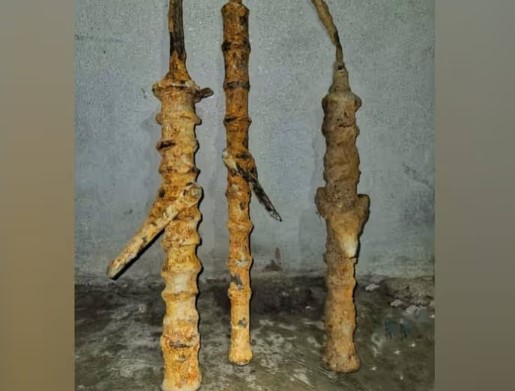A remarkable discovery has been made in Dhubri, where three century-old swivel cannons, complete with ball-shaped projectiles, were unearthed on farmland in Barundanga village. These historical artifacts date back to the 16th to 18th centuries and were found on the property of Sahidul Haque, who was ploughing his land formerly used as a bamboo plantation.
The unearthed swivel cannons are part of a historical collection associated with Gohain Kamal Ali’s embanked road, which historically linked the Koch dynasty capital of Cooch Behar in North Bengal with Agomani in Dhubri and Narayanpur in the Lakhimpur district of Assam.
Mrinmoy Das, a museologist from Assam, explained that these wrought-iron cannons were made from separate iron rings forge-welded together. Used both as artillery and signalling devices, these cannons were mounted on seafaring vessels during battles and were also employed on land for their portability and signalling capabilities.
During the Ahom rule, larger cannons were referred to as bortops and the smaller ones as hilois. The Ahom war boats that carried these cannons were known as Hiloi Chara Nao. These swivel cannons were designed to be easily manoeuvred using a swivel and trunnion, allowing for flexible positioning during combat.

















